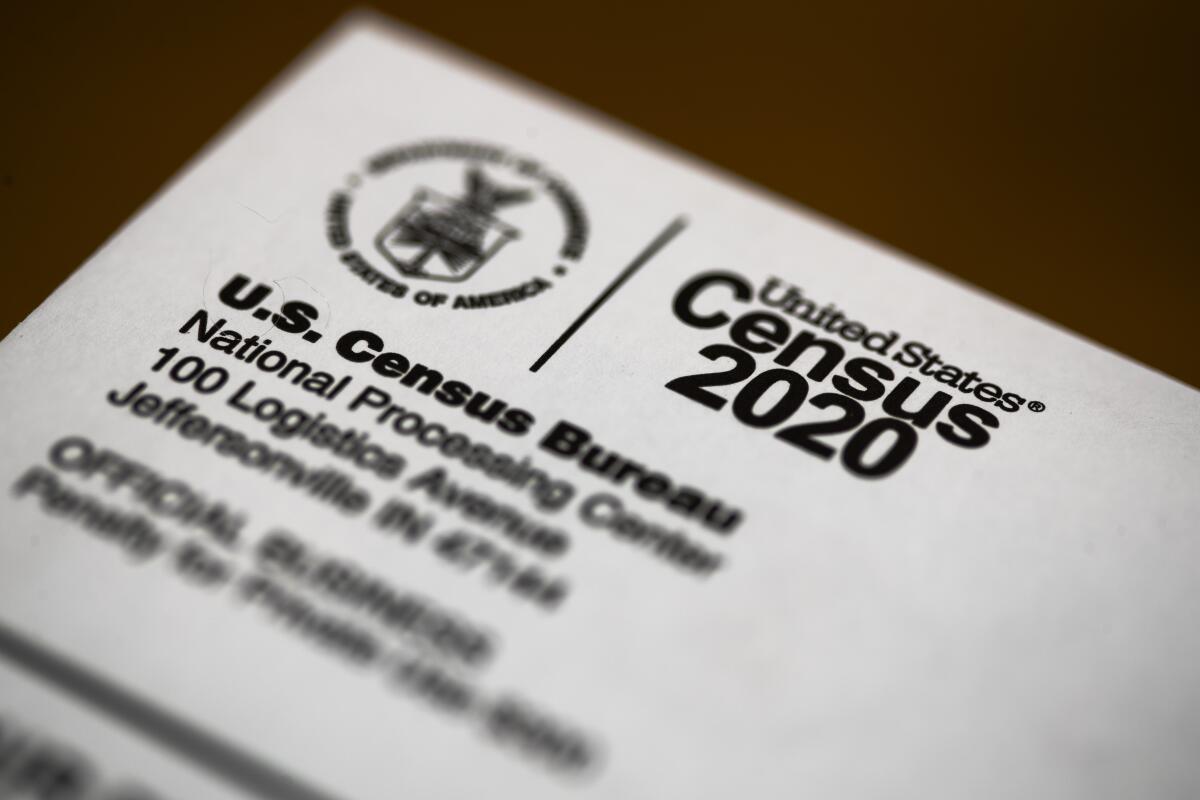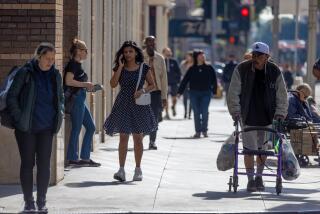Editorial: One less Californian in the House? We can live with that

How big a deal is it that California’s congressional delegation will drop from 53 to 52, the first such loss in representation since statehood in 1850?
Census figures released Monday showed that 39,538,223 people lived in the state in 2020, continuing a population-growth plateau that began 10 years ago.
It’s a turning point to be sure, and of course no state would prefer a smaller share of power to a larger one.
But it’s hardly a stunning setback. In fact it’s part of a long-running shift not away from us, but toward us. In the last 10 years, California grew by 2 million people. That’s more than the total populations in 14 other states. California’s congressional delegation remains by far the largest and will continue to be for quite some time. California has been the nation’s most populous state since 1962 and is likely to remain so for many decades.
Yet all that growth, which fueled what some have called the California dream, has paradoxically endangered that dream by straining our natural and economic resources. The state has matured and could use a little breathing room to catch up with itself.
If there’s any problem the census numbers reveal, it’s the very real concern that our continuing (although slowing) growth is not being properly tabulated. Experts have long worried about census undercounts, especially among Black, immigrant, Native American and rural communities, and among very young children. Census officials have over the years relied on statistical methods to try to correct for undercounts, but past censuses have drawn legal challenges, and given the turmoil surrounding the 2020 count — including the Trump administration’s heavy-handed attempts to reduce compliance among immigrants and the logistical problems created by COVID-19 restrictions — legal challenges are likely this time around too.
The Census Bureau had sought to improve 2020 response rates by moving most of the count to online portals, but even that reinforced the inequities that make a census count so challenging. California’s self-response rate through online and mail-in forms was 69.6%. In upscale Brentwood it was 79.7%, but in the city of Los Angeles it was 58.6%, which meant more census workers had to scour neighborhoods there to try to count those who did not participate.
More than congressional apportionment is at stake: The federal government uses the data in formulas for allocating about $1.5 trillion in annual spending, which helps explain why the decennial counts are so closely watched.
Texas, the population runner-up, gained two seats and will get a roughly corresponding share of those federal funds. Along with a tip of the hat, California might want to offer a measure of commiseration. Growth spurs optimism but also challenges, including disparities in wealth and opportunity — and those inequities can turn into undercounts the next time around.
More to Read
A cure for the common opinion
Get thought-provoking perspectives with our weekly newsletter.
You may occasionally receive promotional content from the Los Angeles Times.






